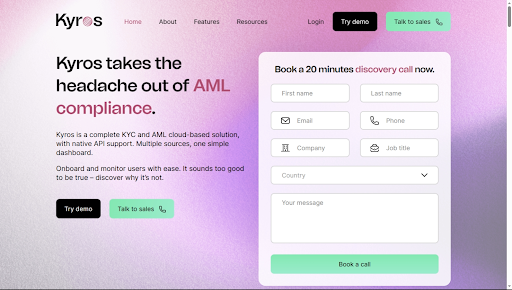This Fintech is down 78% from its peak – is now finally the time to buy?

Any way you slice it, it’s been a tough year for many investors. Inflationary pressure, rising interest rates at the highest pace in decades and geopolitical uncertainty have weighed on shares this year.
One sector that has taken a hit is fintech stocks, and LendingClub (LC -5.03%) has sold out hard. The consumer lender was flying high last year when earnings began growing at an impressive clip, but market weakness has sent its share price down 77% from its peak.
Despite challenges in the consumer loan market, LendingClub continues to increase earnings. Is now finally a good time to buy?
How LendingClub transformed its business
LendingClub was founded in 2006 and underwent a huge transition in its young history. The company began as a peer-to-peer lending platform, where LendingClub would match lenders with borrowers.
During the Great Recession of 2007-09, many people turned to peer-to-peer lenders as they found it more difficult to get loans from banks. At one point, LendingClub was the largest peer-to-peer lender in the U.S., but a series of missteps led to regulatory scrutiny — ultimately leading to the resignation of its CEO in 2016.
The company has since pivoted, eliminating its peer-to-peer lending platform in 2020 and acquiring Radius Bancorp in 2021.
Now, LendingClub provides personal loans to borrowers, especially focusing on people who want to roll up their high-interest credit card debt and other loans into a single, lower-interest loan. The company primarily makes money in two ways: from originating and selling consumer loans, which it calls marketplace income, and through interest income on the loans it has on its books.
Buying a bank helped LendingClub increase recurring revenue
Acquiring Radius Bancorp was a defining moment in LendingClub’s history. By owning a bank, LendingClub provided an affordable source of deposits to help finance the loans. In addition, the company can now keep loans on the books and collect net interest income, which ends up being three times more profitable in the long run, according to CEO Scott Sanborn.
LendingClub started keeping more loans on the books last year after they bought Radius. In the third quarter, the company collected nearly $124 million in net interest income, up 89% from a year earlier. Net interest income is becoming increasingly important to LendingClub’s business and represents 41% of the company’s total income in the quarter – up from 27% last year.
Consumer lenders have faced this challenge in 2022
This year has been tough for businesses, especially consumer lenders. Early this year, LendingClub saw strong demand for investor loans, which led to more startups and growing market revenue. Since then, it has seen tempered loan volumes due to rapidly changing interest rates, which dampened investor demand for these loans.
The decrease in demand is due to the fact that many of the investors who buy these loans have a capital cost based on expectations of forward interest. As expectations rise, the cost of capital rises, and the returns needed to make an attractive investment rise.
Over time, LendingClub will deliver a return by sending the interest to its customers, but it cannot do so immediately. That’s because the company focuses on consolidating credit card debt. Credit card companies tend to increase rates with a delay of one to two billing cycles. LendingClub does not want to raise interest rates too quickly or it will no longer be an attractive option for consumers to refinance.
However, LendingClub has an advantage over other consumer lenders, Upstart Holdings, because it can keep loans on the books. In the third quarter, LendingClub had 33% of the loan assignment on its books. In comparison, Upstart has to sell its loans on the open market, and is more exposed to deteriorating market conditions. LendingClub also focuses on holding high-quality loans, which should help it become more resilient if the economy enters a recession.
Look for this tailwind in 2023
LendingClub is currently stuck in limbo because interest rates continue to rise. However, growing credit card balances have it well positioned to capitalize next year and beyond.
In accordance Equifax, credit card balances reached $916 billion in September, up 23% from the pandemic low in April 2021. Rising credit card balances are good for LendingClub because it primarily focuses on customers looking to refinance and consolidate their credit card debt. As credit card users are hit by higher interest rates, they may find it attractive to turn to the company to collect all their debts at a more attractive interest rate.
LendingClub did a fantastic job reinventing its business to be more like a bank, which should help it continue to grow its top and bottom lines. The company trades at a dirt-cheap valuation, with a price-to-earnings ratio of 3.8 and just above book value of 1.07. With tailwinds from rising consumer credit card debt, now is an excellent time to pick up some shares of this fintech at a steep discount.























